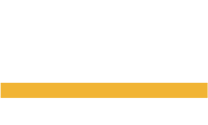What Exactly is a SMSF?
Kells Lawyers • January 11, 2016
In order to remain a complying fund a SMSF must satisfy the following three tests:
1\. there can be no more than four members;
2\. each member must be a trustee or director of the trustee company; and
3\. no member can be employed by any other member unless they are related.
A SMSF is regulated by the Australian Taxation Office ( ATO ) on a compliance basis.
Alternatively, you can be a member of a retail or industry superannuation fund where all of the compliance issues are attended to by the fund and all of the investments decisions are made by the fund for which fees and charges are levied.
So where do the lawyers come in?
Currently, the main activity in this space has been undertaken by accountants, financial planners and the “SMSF Industry”. This group has been in the vanguard of organisations creating SMSFs for their clients and are principally responsible for making SMSFs the largest sector of the Australian superannuation industry.
In the four years to 30 June 2012, SMSFs contributed the largest proportion to the growth in total superannuation assets in Australia. As at December 2012, total SMSF assets were estimated to be $474 billion.
To date most activity has surrounded the creation of SMSF entities and maintaining compliance, to ensure clients continue to get the tax concessions available under the regime.
SMSF ongoing management – the BIG issue
Very few lawyers and their financial industry colleagues have focused on the fact that they may have a role in SMSF management. The current focus by the financial industry has been on ensuring that the SMSFs they create for their clients continue to meet the regulatory and compliance requirements issued by the ATO.
At the present more than half a million SMSFs run by more than one million trustees control nearly $550 billion in assets. There is no doubt that some of these trustees and fund members are going to need a lawyer.
Interpretation of rules and regulations, collection of evidence, application of the law and the preparation of submissions designed to explain or diminish a penalty when the regulator identifies an actual or potential breach has typically been the work of lawyers and more specialist accountants.
There is a misconception that only tax lawyers or accountants can help SMSF trustees in breach situations because the ATO is the regulator.
All superannuation law is sourced in the SIS Act. The ATO regulates SMSFs but such an entity enjoys the same source of laws as any other superannuation fund in Australia. These laws may also involve a certain amount of basic trust law – which seems to often be overlooked by Superannuation Fund Administrators – but not necessarily by the Superannuation Complaints Tribunal or the Courts.
How can a good superannuation SMSF trustee and member go wrong?
The way a SMSF deals with real property can make all the difference between acquiring an asset for the fund or causing the SMSF to become a non compliant fund or incurring significant penalties for trustees and members – and or causing the SMSF to be forced to dispose of inappropriately acquired property.
Examples:
1. SMSF entering into a loan agreement or contract and acquiring title to property in member’s names before the SMSF is properly constituted.
This may be interpreted by the ATO as the SMSF providing direct financial assistance to the SMSF trustee and members by funding the loan. Alternatively, it could amount to the SMSF providing lump sum superannuation payments to fund members before they are entitled to such a distribution.
2. Obtain a loan to acquire property in the name of the SMSF.
In the strict sense superannuation law prohibits SMSFs from borrowing money to acquire real property. This restriction can be avoided if the SMSF funds the purchase of real property through loans held on trust by a “security trustee”.
SMSFs engaging in such a transaction must ensure the property title is registered in the name of the SMSF’s security trustee and NOT in the name of the SMSF.
3. Purchase residential property from a related entity.
SMSFs cannot acquire assets from fund members or other related parties to the fund. Related parties include family members, business partners and associated entities.
This breaches the in-house asset test rules of the superannuation law and carries hefty penalties. Again, this could see the fund forced to sell the property at a loss.
4. SMSF using borrowed monies to construct a residential property on the SMSF land.
So, the SMSF validly funds the purchase of real property through loans held on trust by a “security trustee” and then decides to use more borrowed monies to construct a dwelling on the fund land. Although a SMSF can [within limits] expend funds to maintain or repair a fund asset, if that process can be characterised as improving the underlying asset to such an extent that it is no longer the same asset it will be unlawful.
The improved asset would then be held on trust and possibly be subject to a forced sale with all consequential losses flowing to the SMSF.
So what is the short answer to examples 1 through to 4?
Get a lawyer experienced in superannuation law and trust before the SMSF or its trustees enter into a real property transaction.

Kells has been delivering outstanding services and legal expertise to commercial and personal clients in Sydney and the Illawarra region for more than five decades. Our lawyers are savvy and understand your needs.
Subscribe
Want to get the latest articles and news delivered to your inbox?




